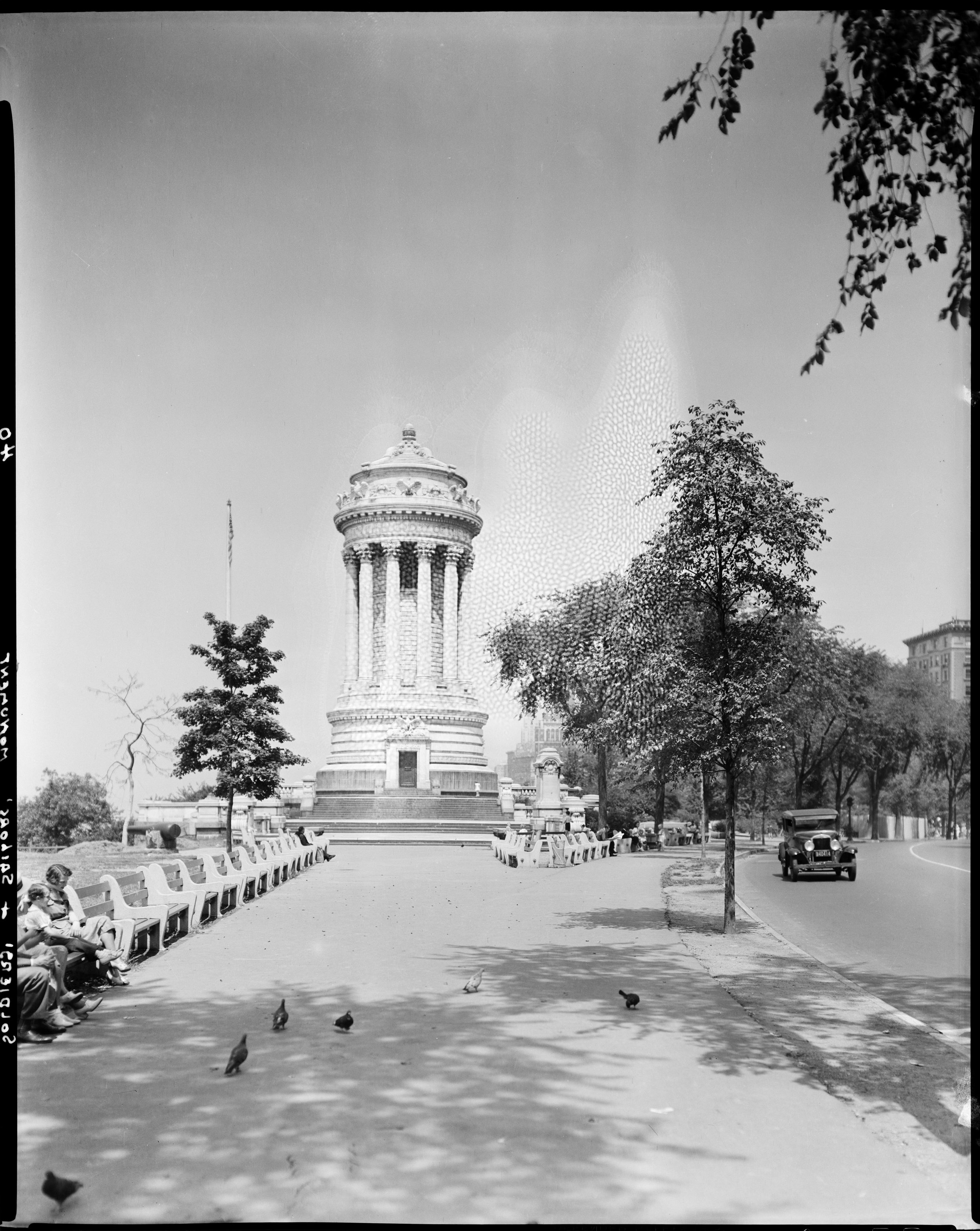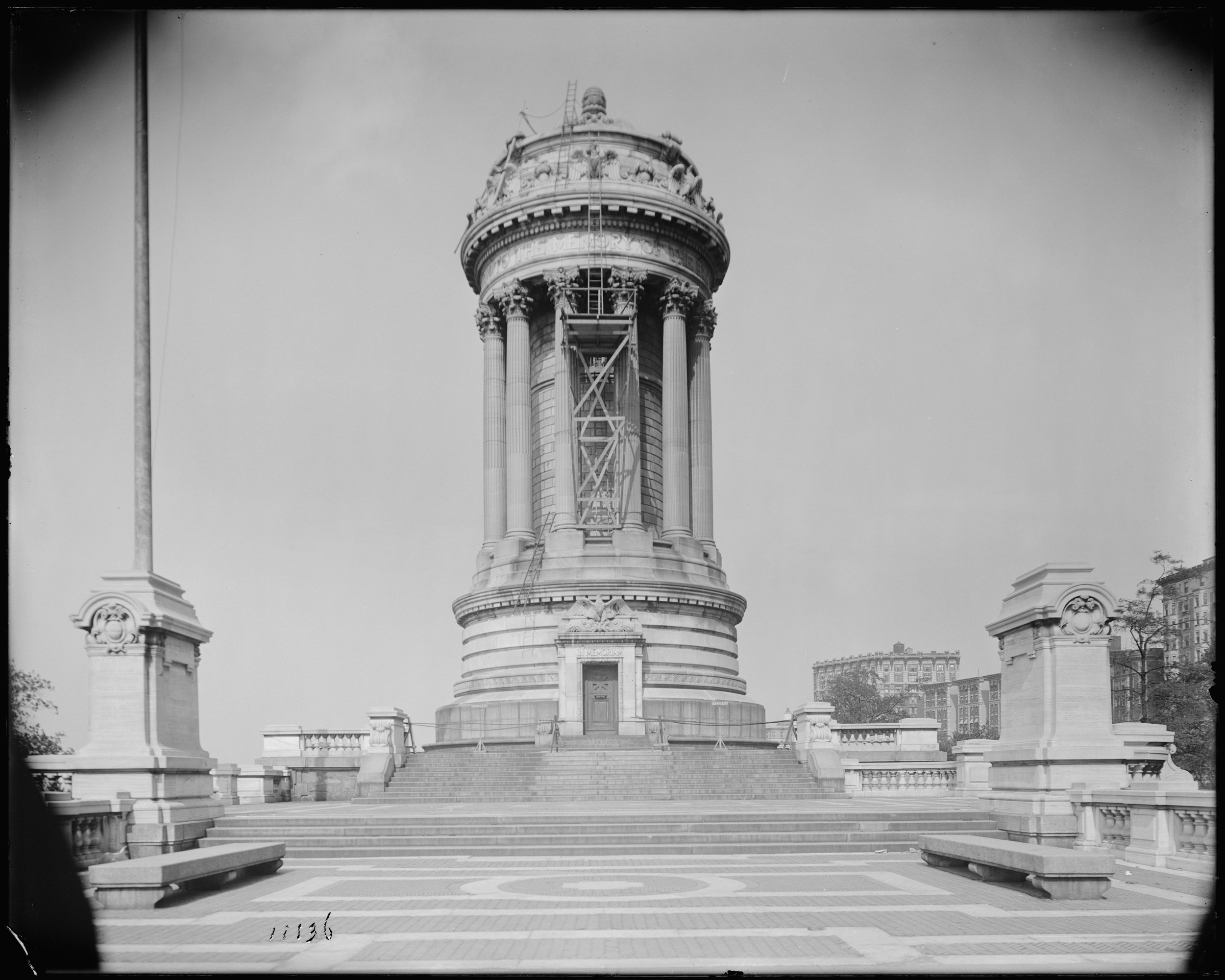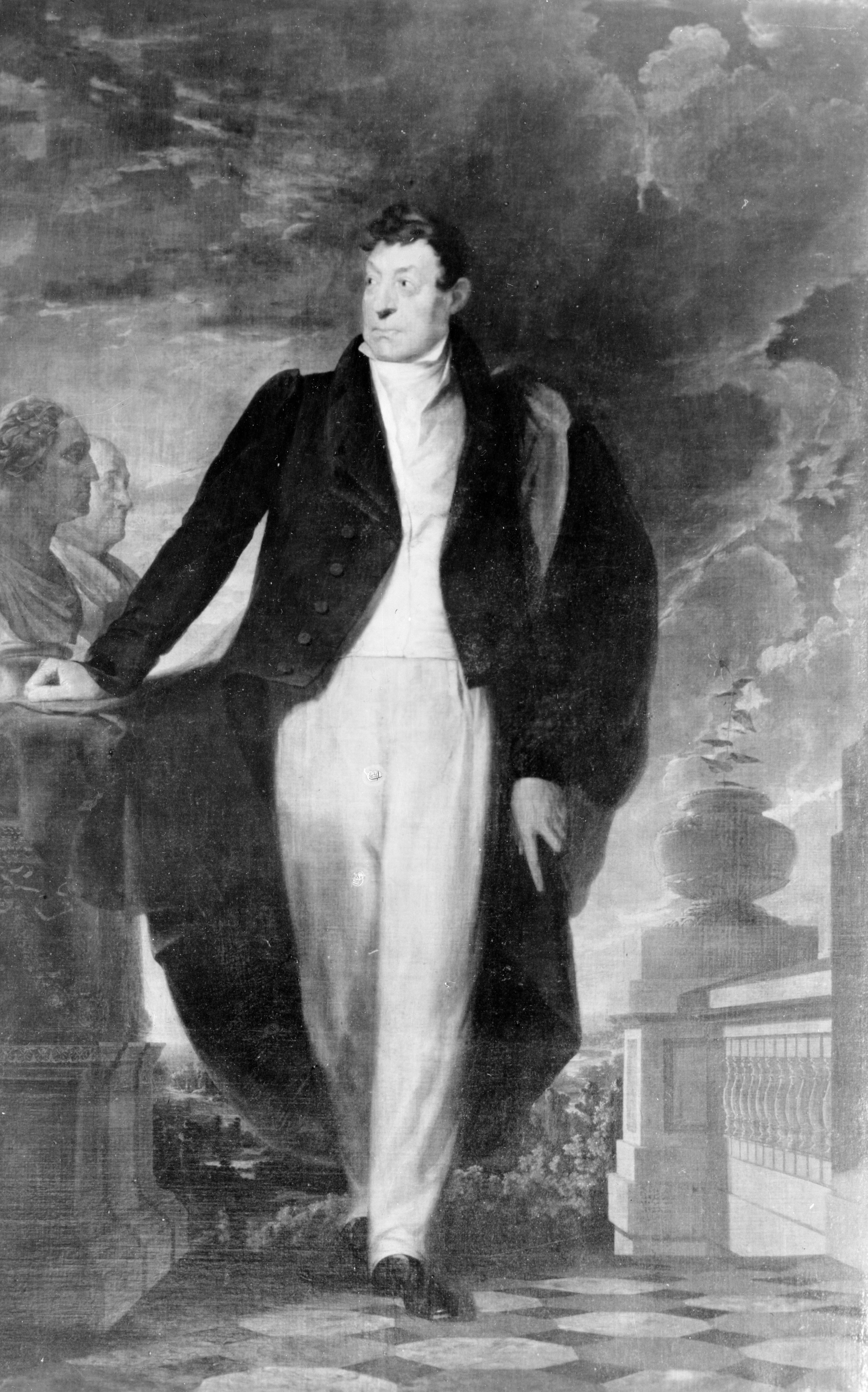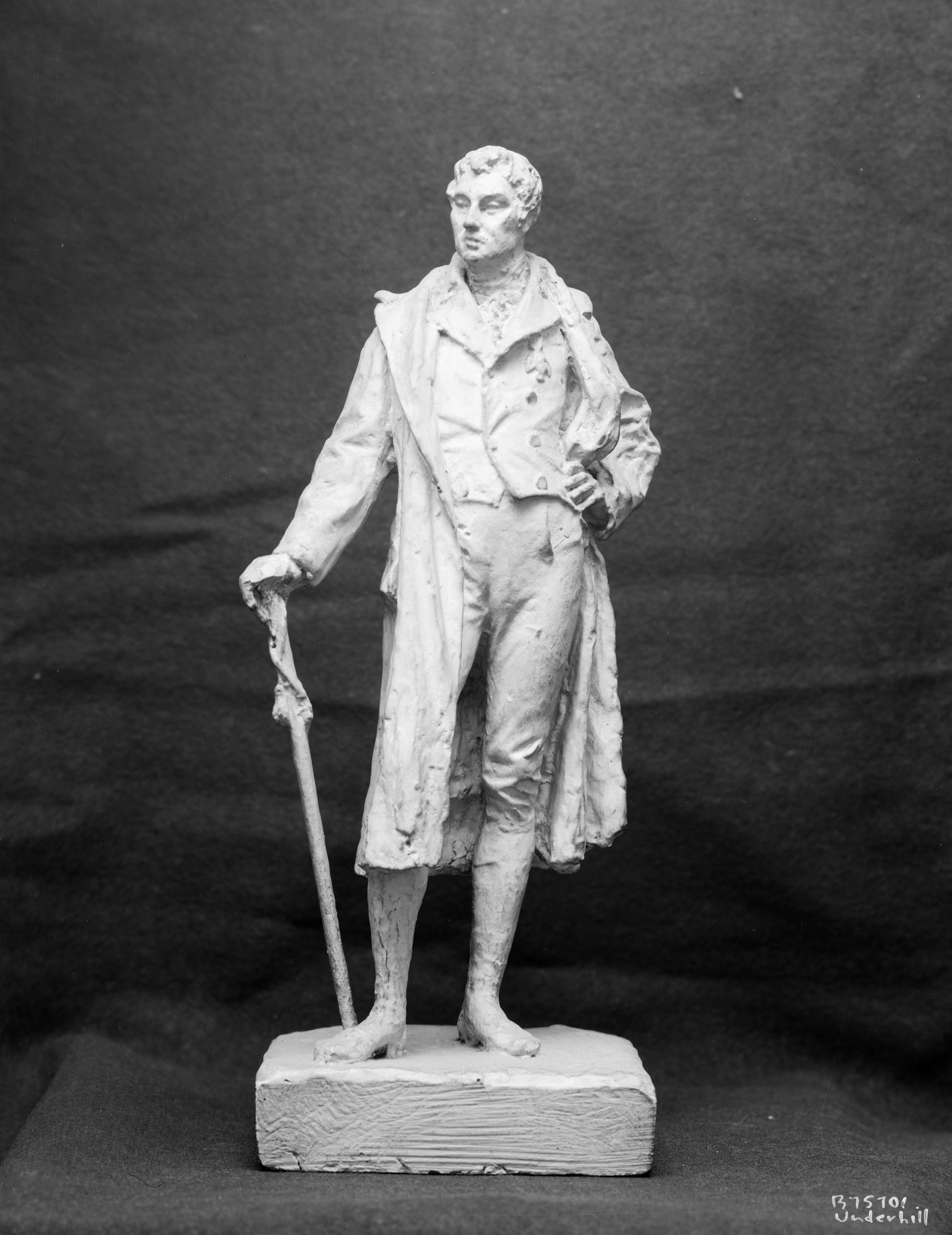On Memorial Day, May 30, 2022, New York City Council Member Gale Brewer spoke before a gathering at the Soldiers and Sailors Monument, in Riverside Park, Manhattan, near 89th Street. The monument, erected in memory of the New York regiments that fought in the Civil War, served as the terminus for Memorial Day parades for decades after its dedication in 1902. In recent years it suffered extensive deterioration and in 2017 was fenced off to protect people from the cracked and crumbling stone. At the 2022 ceremony, Brewer rallied support for a long-overdue restoration of the landmark and urged the audience to sign a petition urging the City to fund desperately-needed repairs. “Our servicemen and women, our citizens, and our City deserve better,” Brewer said.
Soldiers and Sailors Monument, Riverside Park, New York, ca. 1936. WPA Federal Writers’ Project Photograph Collection, NYC Municipal Archives.
Six months later, Council Member Brewer’s efforts were rewarded with a $62.3 million allocation in the City’s capital budget for the restoration.
The monument is located on a promontory along Riverside Drive at West 89th Street. The Stoughton brothers, engineer Charles W. (1860–1944), and architect Arthur A. Stoughton (1867–1955), won a public competition for their design inspired by Greek antiquity. An example of the City Beautiful movement, the monument is in a cylindrical form with 12 Corinthian columns of white marble. The monument is capped with a richly carved ornament of eagles and cartouches sculpted by Paul E. Duboy (better known for his work on the Ansonia Hotel).
Commissioned by the City of New York and the Memorial Committee of the Grand Army of the Republic in 1893, the competition was held in 1897. New York State Governor Theodore Roosevelt officiated at the cornerstone laying ceremony in January 1900. On Memorial Day 1902, with then- President Roosevelt presiding, the completed monument was unveiled following a parade of Civil War veterans up Riverside Drive. For many years the project was delayed because the City could not agree on a site for the monument. The Municipal Art Society vetoed the initial location at Fifth Avenue and 59th Street. Eventually it was sited along the axis of Riverside Drive, looking south and out toward the Hudson River, a companion structure to the Grant National Memorial located two miles north.
Aerial view, Soldiers and Sailors Monument, Riverside Park, January 1934. Department of Parks & Recreation Photograph Collection.
In the early 1960s, the City spent over $1 million in extensive repairs to the monument, including a new roof. It was designated a municipal landmark in 1976.
The Landmark Designation Report for the Soldiers and Sailors Monument and the Department of Parks and Recreation 2017 Soldiers’ & Sailors’ Memorial: Conditions Survey & Restoration Treatment Study can be accessed in the Municipal Library’s Government Publication Portal.
“History and dignity restored,” read the New York Daily News article on January 15, 2023, reporting on funding for the restoration in Mayor Eric Adam’s budget. Following the announcement, Council Member Brewer thanked the Mayor and remarked, “The 120-year-old monument was built to honor Union Army soldiers who fought against slavery in the Civil War and brings together veterans and civilians to remember all those who have died serving this country. The future of this memorial is bright. Restored to its former glory, it will again speak of our memory of war and the dream of peace.”
Monument 89th Street, Soldiers and Sailors, showing scaffolding, September 15, 1927. Photo by Eugene de Salignac, Department of Bridges/Plant & Structures Collection.
For the Record readers are invited to visit the Monument this Memorial Day, May 29, at 10 a.m. to enjoy a ceremony planned in conjunction with Fleet Week, dedicated to honoring our nation’s military personnel who died serving in the United States Armed Forces. The event will commence with a musical prelude by the U.S. Marine Corps Band, followed by a processional featuring the Piper New York Caledonian Club, Sons of United Veterans of the Civil War and Veteran Corps of Artillery at 10:30 a.m. Retired Commander Peter Galasinao of the United States Navy and President of the Soldiers’ and Sailors’ Memorial Association will deliver welcoming remarks. Guest speakers will include City Council Member Brewer, Commissioner of NYC Department of Parks & Recreation Sue Donoghue and other City officials.










